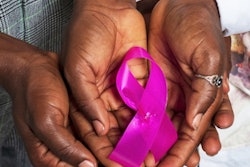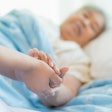Black women who live in disadvantaged neighborhoods experience higher breast cancer mortality risk, according to findings published April 7 in JAMA Network Open.
This trend continued even when stage at diagnosis, treatments, and individual-level lifestyle factors were accounted for, wrote a research team led by Etienne Holder, PhD, from the Slone Epidemiology Center at Boston University in Massachusetts.
“These findings suggest that community-level interventions may be critical to reducing racial disparities in breast cancer survival,” Holder and co-authors wrote.
Breast cancer is the leading cause of cancer death among Black women, and they continue to face more barriers to care than white women. Researchers in recent years have explored potential links between breast cancer care and socioeconomic factors.
One factor that has caught researchers’ attention is historic redlining. This discriminatory practice saw Black residents in neighborhoods systematically denied services such as mortgages, insurance loans, and other financial services.
The Holder team evaluated these links by focusing on neighborhood disadvantage, economic segregation, and personal experiences of racism. It included data from the prospective Black Women’s Health Study, a nationwide cohort of 59,000 Black women. These women had breast cancer at stages I to III and survived at least 12 months after initial diagnosis.
The final analysis included 305 breast cancer-specific deaths among 2,290 women with invasive cancer and an average age of 56.7 years. The women were followed up for a median of 10.5 years.
Women living in the most disadvantaged neighborhoods had a mortality rate of 14.3 per 1,000 person-years. Women living in the least disadvantaged neighborhoods meanwhile had a mortality rate of 8.8 per 1,000 person-years. This difference led to a hazard ratio (HR) of 1.47.
The team also reported that HRs were greater than one for women living in areas of extreme economic deprivation (vs. privilege, HR = 1.19) and for women who reported experiences of racism in at least two institutional spheres (vs. none, HR vs. 1.28). However, these findings were not statistically significant.
“Interestingly, age-adjusted findings from the present study suggested a positive association, but there was little evidence of an association after robust covariate adjustment,” the study authors wrote.
The authors suggested that their results show that attributes of the neighborhood environment may worsen poorer survival rates among Black women with breast cancer.
“These attributes include chronic exposure to stressors, longer distance to treatment facilities, and limited access to a nutritional food environment,” they wrote. “Reinvesting in communities may improve breast cancer outcomes.”
The full study can be accessed here.



















